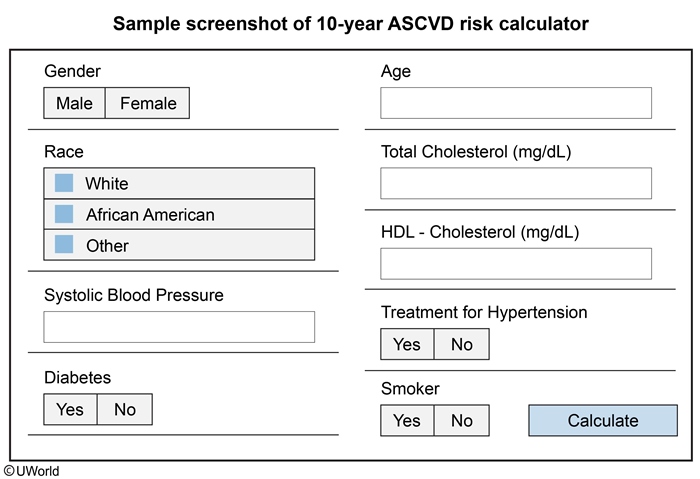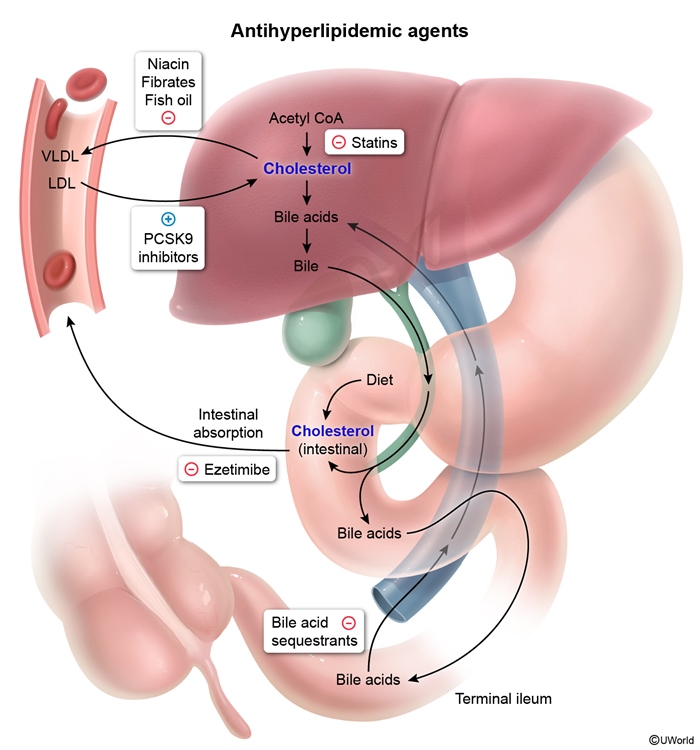Management Of Dyslipidemias
Article Sections
Introduction
This article focuses on treatment strategies to address dyslipidemias, including high levels of low-density lipoprotein (LDL) and triglycerides (TG), and/or low levels of high-density lipoprotein (HDL). It begins by discussing general treatment principles (eg, lifestyle management, assessment for risk of atherosclerotic cardiovascular disease [ASCVD], management of hypertriglyceridemia). Subsequently, each drug class is discussed in more detail. An overview of dyslipidemia is presented in a separate article.
General principles of management
Dyslipidemia is often diagnosed on routine blood testing (comprehensive lipid profile). Common patterns are described in the table (Table 1).
The primary goals for managing dyslipidemia include:
- Prevention of atherosclerotic cardiovascular disease (ASCVD): ASCVD risk is causally linked to chronicity and severity of LDL elevation; small, dense LDL particles are particularly high risk. Low HDL and high TG are commonly seen with chronic metabolic inflammation (eg, insulin resistance) and correlate with increased ASCVD risk, but evidence is insufficient for a causal relationship.
Continue Learning with UWorld
Get the full Management Of Dyslipidemias article plus rich visuals, real-world cases, and in-depth insights from medical experts, all available through the UWorld Medical Library.
Figures

